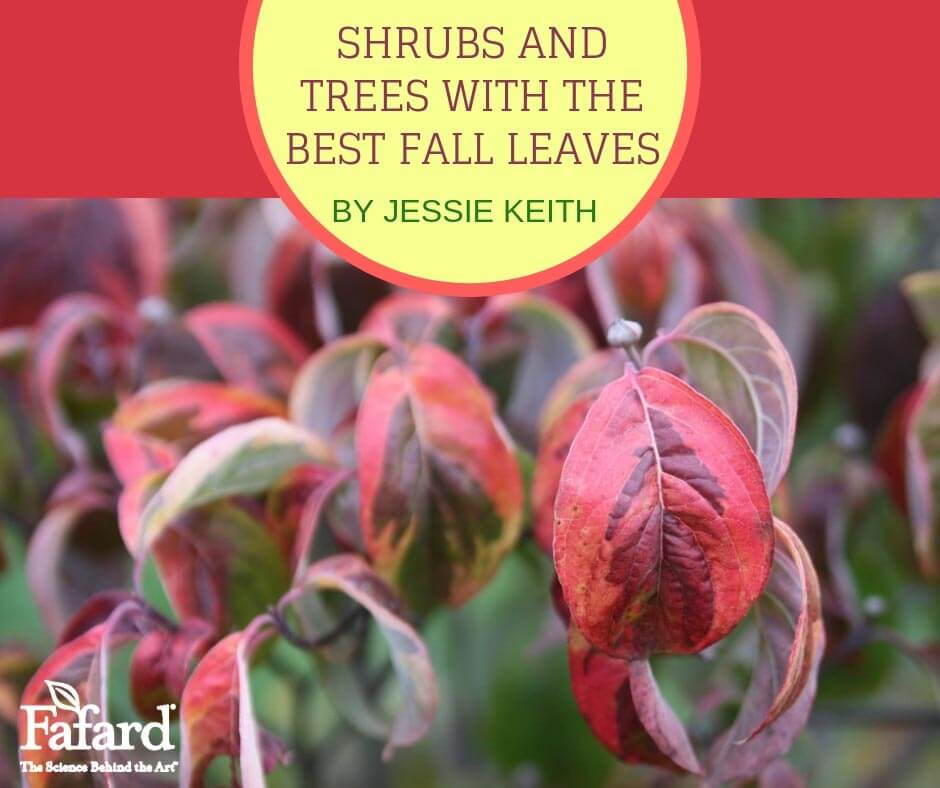
Cool, moist, bountiful summers lead to gloriously bright fall leaves. Why? Because the healthier the trees and shrubs, the brighter and more colorful the leaf pigments. (Leaf pigments require a lot of energy to make, which is why plants need to be healthy and productive to produce a lot.) So, if the growing season has been generous, the season’s leaf colors should be off the charts!
It’s almost like magic when the fall leaves turn from green to fiery fall shades. Red, yellow, orange and purple fall leaf colors are present even in summer, but they are hidden behind a mask of green chlorophyll. This dominant green pigment hides nearly all other leaf pigments until temperatures cool down and leaves begin to die in autumn. As the leaves end their cycle, water-soluble chlorophyll breaks down while many of the brighter leaf pigments remain intact. So at the end of the season, leaves truly show off their true colors (or underlying pigments).
Different pigment types produce different leaf colors, and there are three primary pigments, including chlorophyll. The two other types are carotenoids and anthocyanins. Carotenoids (think carrots) are water repellent and product bright yellow and orange colors in fall leaves. (The most common carotenoid is the healthful ß-carotene, which is in many of the foods we eat.) Anthocyanins are water-soluble and responsible for red leaf colors as well as purplish leaf colors. When the green chlorophyll in the chloroplast dies away, carotenoids and anthocyanins are the showy pigments left behind.
Best Gold and Orange Fall Leaves
Of the yellow-, gold- and orange-leaved fall shrubs, few are as nice as native witch hazels (Hamamelis virginiana) and Fothergilla (Fothergilla major and F. minor). The low, spreading fragrant sumac (Rhus aromatica ‘Gro Low’) is also a winning shrub with bright gold and orange color. For peachy golden orange leaves, nothing is better than the sugar maple (Acer saccharum); the cultivars ‘Legacy’ and ‘Green Mountain’ are particularly bright orange show stoppers. Two more trees of note include the two deciduous conifers, the eastern larch (Larix laricina), which has lovely golden needles, and bald cypress (Taxodium distichum), which turns rich russet orange. Finally, the pure gold leaves of the ginkgo (Ginkgo biloba) look like golden fans on the limb before they quickly fall to the ground creating a bright carpet of color.
Best Red Fall Leaves
Gardeners love red-leaved trees and few are as crimson in fall as the red maple ‘October Glory’ (Acer rubrum ‘October Glory’), though the Freeman maple Autumn Blaze (Acer x freemanii ‘Jeffersred’ AUTUMN BLAZE) is a contender. A desirable tree with pleasing russet red leaves is the shumard oak (Quercus schumardii) while the native blackgum (Nyssa sylvatica) offers leaves of the finest scarlet. Sumacs (Rhus spp.) of all manner of brilliance typically redden roadsides across North America, and a few like Prairie Flame Dwarf Sumac (Rhus copallinum var. latifolia ‘Morton’ PRAIRIE FLAME) are also great for the landscape. Two more superb red-leaved fall shrubs of desire are the chokeberry (Aronia arbutifolia ‘Brilliantissima’) and the orange-red-leaved Canadian serviceberry (Amelanchier canadensis).
Best Purple Fall Leaves
Many fall beauties have leaves emboldened with both purple and red hues. The ever-beautiful oakleaf hydrangea (Hydrangea quericifolia) is one of these as is the classic flowering dogwood (Cornus florida). Of the flowering dogwoods, the disease-resistant cultivar ‘Appalachian Spring’, with its crimson-purple fall leaves, is the most recommended, but the tricolored cultivar ‘Rainbow’ is also a visual delight. The wonderfully hardy American cranberrybush (Viburnum opulus var. americanum) also turns pleasing shades of purple and red come autumn. And when it comes to trees with impressive purple shades, the sourwood (Oxydendrum arboreum) and sweetgum (Liquidambar styraciflua) are both exceptional.
There are several ways to keep fall-fantastic trees and shrubs in prime health for the autumnal show. First, it is important to keep them well-irrigated during very dry periods. A mulch of rich compost or well-deteriorated bark will also help them retain summer moisture while dissuading weeds at the root zone. Fafard Premium Organic Compost is an excellent product for seasonal mulching. And if care and the season have been generous, take time to enjoy the fleeting but glorious color of fall.






